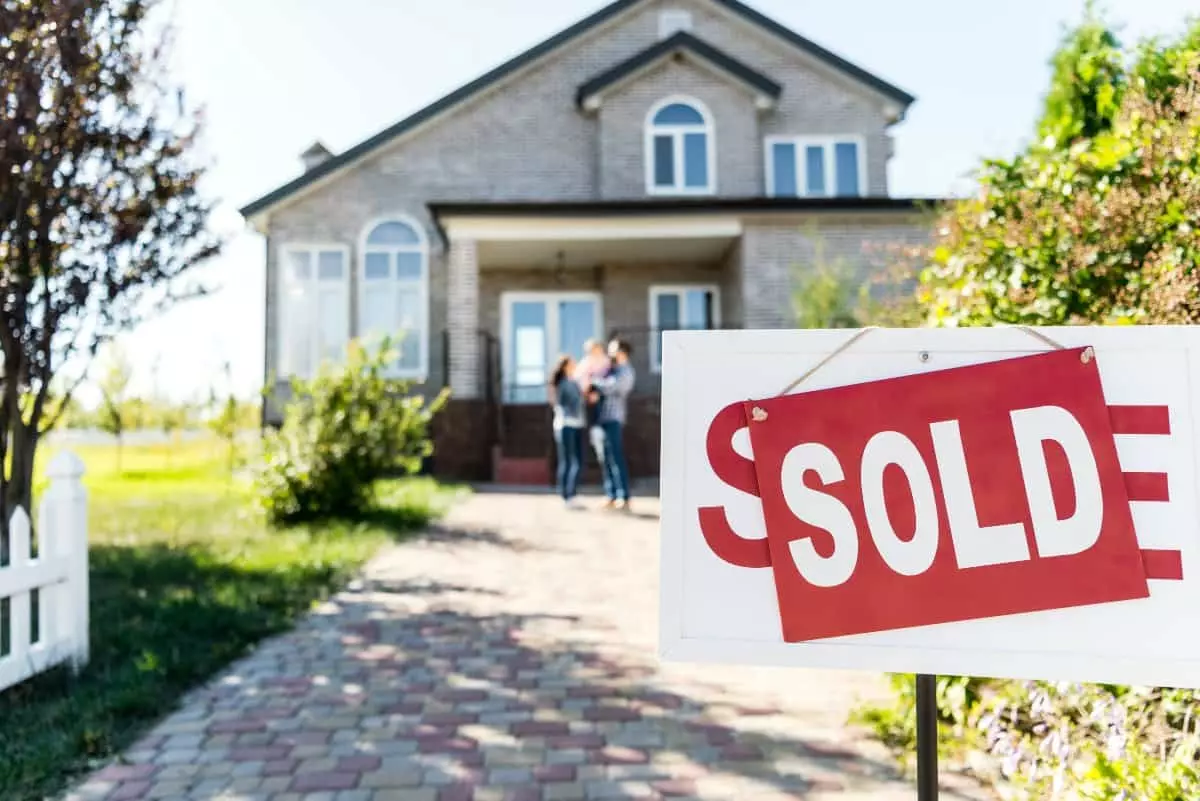What Is Velocity Banking: Strategy and How to Calculate It
Velocity banking is a financial strategy designed to help individuals pay off debt—especially mortgages—faster by leveraging a line of credit. Rather than following the traditional route of monthly payments from a checking account, this method involves using a line of credit to make larger lump-sum payments toward the loan principal.
What Is Velocity Banking and How Does it Work?
What is velocity banking? Velocity banking is a method where you use a line of credit as the primary account and pay off a loan with lump sums. A line of credit may use your cash flow and extra money to cover your expenses and pay off your mortgage. This strategy often utilizes a Home Equity Line of Credit (HELOC), and the HELOC functions as your primary expense account instead of a checking account.
What is HELOC?
A Home Equity Line of Credit is your main expense account instead of a checking account. Individuals with a savings account may no longer need it since their income will go toward the mortgage through the HELOC.

This method aims to pay off a mortgage with less interest and at a faster rate. Those who generally utilize the velocity banking strategy will use a HELOC. With a HELOC, you borrow against the equity in your home, and the house is used as collateral for the line of credit. As you repay your remaining balance, you regain your credit like a credit card.
Here is a velocity banking step-by-step guide:
- Take out a mortgage
- Take out a HELOC
- Use your HELOC to pay down your mortgage
- Bring your HELOC balance to zero
How do you use a HELOC to pay off your mortgage? You open a HELOC with a credit limit and make lump-sum payments from the HELOC to your mortgage. Over the month, you can put your living expenses on a credit card, and at the end of the month, you use your HELOC to pay off the credit card and your mortgage. Because a HELOC is revolving – meaning you can pay it back at any given time – the interest payments are determined using the daily average.
Velocity Banking Strategy
Looking at actual examples can make it easier to understand how velocity banking works. A velocity banking calculator can also help you determine correct payment numbers and figures. Consider the example below:
You have a $250,000 house and a $150,00 mortgage balance. You may also have other debts, such as car loans, credit cards, personal loans, and student loans.

Usually, when you pay your debts each month, your paycheck goes into your checking account, and then you use that money to write checks or make payments toward your loans. Every payment you make typically gets split into two parts: one portion reduces your loan balance (the principal), while the other goes toward interest charges.
The problem is, with traditional loans, banks arrange payments so that most of the interest gets paid upfront. It protects banks by ensuring they collect most of their profit early on. If you stop paying or default later, the bank has already secured a big chunk of the interest, reducing their risk. Unfortunately, this also means you end up paying much more interest overall.
The first payment made on this mortgage would send over 80% of the payment to interest and less than 20% to paying down the principal amount. After 18.5 years of payments, the monthly payment crosses over, and most of the payment finally goes toward paying down the principal amount, with the remainder paying interest.
In the example, let’s assume the mortgage was $200,000. Your first mortgage payment would be around $952 monthly, and the interest rate would be 4% in a 30-year fixed mortgage. Using a Velocity banking calculator, your first mortgage payment would be around $790 in interest and $162 in principal balance repayment.
Building an Efficient Budget for Velocity Banking
Velocity banking is an accelerated method that allows you to pay debt faster and maximize cash flow. Using a HELOC can streamline your finances and reduce interest payments. Building an efficient budget is key to making this system effective.
This will include categorizing all incomes and expenses, focusing on debt repayment, and maintaining consistent cash flow to support velocity banking. This will allow you to carve out a clear financial roadmap, ensuring you have enough money to live while aggressively paying off debts.
The velocity banking process starts when one identifies all debts, their current balance, the rate of interest charged, and the minimum payment required. Then, one strategically uses a line of credit or credit card to pay down chunks of high-interest debt, shifting income to pay down the line of credit quickly.

Repeated over time, this cycle reduces the overall interest paid and speeds up debt payoff. It’s essential to weigh velocity banking vs extra payments to understand which method aligns with your financial goals. While velocity banking can work, it takes discipline and careful planning.
If the credit lines are not managed correctly, the consequence could be more debt than reduced financial burdens.
Maintaining a strict budget and tracking your expenses will allow you to navigate velocity banking with a credit card or HELOC without problems, helping you get out of debt quicker.
Calculating Potential Savings with Velocity Banking
Velocity banking utilizes tools like HELOC or credit cards to minimize interest payments and expedite debt repayment. It generally starts with using the HELOC or credit card to make large payments on a primary loan, such as a mortgage, sometimes called a velocity mortgage. From there, regular income is allocated to quickly paying off the HELOC or credit card balance to reduce the interest accrued on the original debt.
To calculate potential savings, you can compare velocity banking to extra payments. Extra payments lower the loan balance but accrue interest daily until they are paid off. Velocity banking, on the other hand, pays off large chunks of debt early, significantly reducing the principal and the interest calculated on it.
For instance, using the step-by-step process of velocity banking, you can use a HELOC to pay $20,000 off a mortgage and then redirect your income to pay off the HELOC within six months. The potential savings come from the reduced mortgage interest and the shorter repayment period.
However, if you decide to proceed with velocity banking, be sure to subtract any HELOC or credit card fees and your ability to maintain a steady cash flow. When executed correctly, the strategy can yield significantly interesting savings and speed up debt payoff, thus making the deal attractive to those who can maintain disciplinary financial management.
Common Assumptions of Velocity Banking
Velocity banking is a simple way to pay off your mortgage quickly. Velocity banking will help them pay off their mortgage sooner and with less interest.

However, a few assumptions regarding this banking strategy could lead to further financial problems if you learn how to utilize the velocity banking strategy properly.
Assumption #1: Paying Off Your Mortgage Early Is the Best Financial Decision
With velocity banking, there is the assumption that you must pay off your mortgage as soon as possible, even if it means using all your available funds.
On the contrary, you should wait to pay off your mortgage. Your home is your most crucial liability, and you are expected to have a mortgage.
Pay off your mortgage while using the extra cash to invest, grow your savings, or make other essential purchases. For example, you could invest in stocks, life insurance, a mutual fund, or save up for retirement.
Assumption #2: Equity in Your House Counts as Savings, and a HELOC Will Increase It
Velocity banking can help increase your home equity. However, that is not savings, and you may only sometimes be able to access it.
According to Life-Benefits, to truly count as savings, it must have “maximum liquidity and safety.” You must be able to access the cash quickly and easily whenever needed. So, while you may be able to increase your home equity, you are not growing the money you can access.
The velocity banking strategy may help those who want to pay their mortgage quickly. However, for those who want to save up their money for retirement, life insurance, or other purposes, there may be better options than velocity banking.
Cons and Pros of Velocity Banking
As with everything, weighing the pros and cons before deciding is best. In the case of a financial decision, extreme precaution and prior research are a must.
Velocity banking is only for some, so familiarize yourself with velocity banking’s pros and cons before proceeding with this strategy.
Pros of Velocity Banking
- Velocity banking is a great way to pay down your mortgage if you know how to spend your money and allocate your finances properly.
- You can quickly decrease debt.
- Getting out of debt can allow you to invest your money in business ventures, life insurance, or other big-ticket items.
Cons of Velocity Banking
- Having an additional line of credit can lead to more debt.
- Having access to your equity could increase your spending.
- You may need help finding a bank that has fixed-rate HELOCs. As a result, you may need to determine the interest amount you will be charged over time.
- Velocity banking requires having constant cash flow. This is what you would use to pay off outstanding balances. If you do not have adequate cash flow, this velocity banking strategy may not be as effective in the long run.
- You can only focus your attention on the mortgage payoff. With velocity banking, you must put all your money toward paying off your mortgage. It would be great if it were your goal. However, you may reconsider if you also want to invest or save money.
- Scams do exist. Numerous companies and people offer assistance when it comes to velocity banking. In some cases, they are scams. You should not have to pay for these services to utilize the velocity banking strategy.
Velocity Banking vs Extra Payments: Alternatives
If you decide velocity banking is not the right choice, there may be other options. Look at some of these alternatives of the velocity banking concept below:
- Biweekly payments. Instead of making monthly payments, you can make payments every two weeks. This way, you will make 26 payments annually, equal to 13 months’ worth. With these extra payments, you may be able to shave off a few years from a 30-year mortgage. It may not be a significant change, but it is something.
- Refinancing. Refinance your house for a lower interest rate or a shorter term.
- Making extra payments. If you can make multiple payments at any time toward your mortgage, it can decrease your principal significantly. Adding more monthly dollars can help you slowly pay down your debt.
- Paying on time. The last option is to make timely payments and use the extra money for investments or savings.
Final Thoughts
Velocity banking may be viable for those who want to pay off their mortgage quickly. While the idea sounds appealing, some considerations, such as increased spending and additional debt, should be made.
Be sure to do some research before choosing velocity banking. While you may want to pay off your loans immediately, it may not be the best decision if you are looking to invest or save your money for the future. If you need more clarification, meet with your financial advisor to discuss the benefits of a velocity banking strategy.
Velocity Banking FAQ
What Are the Benefits of Using Velocity Banking?
Velocity banking pays off debts faster because one pays more toward the loan principal, reducing the interest burden. The cash flow is also more flexible since it uses tools such as HELOC or credit cards.
Is Velocity Banking Suitable for All Types of Loans?
Velocity banking works perfectly for amortized loans, such as mortgages. Still, it can also be applied to other loans, including car or student loans, provided the interest rates and terms are reasonable.
How Can I Implement Velocity Banking in My Personal Finance Plan?
To implement velocity banking, get a HELOC or a low-interest credit card, deposit your income into the line of credit to reduce its balance, and then use the freed-up credit to make one-time payments against your principal debt. Repeat this cycle for faster payoffs.
How Do I Calculate Interest Savings With Velocity Banking?
To calculate the interest savings, compare the interest paid over the loan term with velocity banking versus a traditional payment schedule. Use an online calculator for velocity banking or consult a financial expert to get accurate estimates.
How Long Does It Take to See Results With Velocity Banking?
Results will vary depending on debt size, interest rates, and financial discipline. Many users experience noticeable debt reductions within months and significant interest savings within just a few years.
How Can I Use Velocity Banking to Build Wealth?
Velocity banking saves on interest and reduces debt, freeing cash to invest in other wealth-building opportunities, such as stocks, real estate, or retirement accounts.
How Do I Track My Progress With Velocity Banking?
Monitor your loan balance, interest savings, and monthly HELOC or credit card balances to track progress. Use budgeting and financial tracking tools to ensure accurate reporting.
How Can I Optimize My Cash Flow Using Velocity Banking?
Optimize cash flow by budgeting for essential expenses, reducing discretionary spending, and consistently directing income to the HELOC or credit card to minimize interest costs.
Who Should I Consult Before Implementing Velocity Banking?
Research your financial situation with a financial or mortgage advisor to determine your goals and whether you are a good candidate for velocity banking.
What Is the Difference Between Velocity Banking and Traditional Mortgage Payments?
Mortgage payments usually involve paying the same amount regularly; more early payments go to interest. With velocity banking, more significant amounts at less frequent intervals are used to make principal lump-sum payments, accelerating the debt reduction process through either a HELOC or a credit card.
What Types of Loans Can Be Used in Velocity Banking?
Velocity banking can be applied to mortgages, student loans, car loans, and credit card debts, provided the terms and interest rates of the HELOC or credit card are reasonable.
What Are the Key Factors to Consider Before Adopting Velocity Banking?
Key factors include financial discipline, stable income, favorable HELOC or credit card interest rates, and awareness of the associated risks, such as accumulating more debt if the debt is mismanaged.
Table of Contents
- What Is Velocity Banking and How Does it Work?
- Velocity Banking Strategy
- Building an Efficient Budget for Velocity Banking
- Calculating Potential Savings with Velocity Banking
- Common Assumptions of Velocity Banking
- Cons and Pros of Velocity Banking
- Velocity Banking vs Extra Payments: Alternatives
- Final Thoughts
- Velocity Banking FAQ